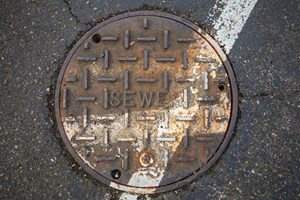Corps of Engineers, Cahokia Heights, partner on sewer improvement project
(UI) — The U.S. Army Corps of Engineers, St. Louis District, and the City of Cahokia Heights, Illinois, recently entered into a cost-shared Project Partnership Agreement, or PPA, for sewer improvements included in the Sanitary Sewer Trunkline Project.
The $4.67 million project, of which $3.5 million was sponsored by Sen. Dick Durbin as a Congressional Directed Spending Item, will involve trenchless sewer rehabilitation of the largest, deepest, and most downstream sections of the main sanitary sewer trunkline conveying flow through the city of Cahokia Heights. These improvements will correct pipe deficiencies, restore structural stability, and ensure long-term reliability of this main conduit for wastewater transport.
The Sanitary Sewer Trunkline Project is located primarily within city collector streets spanning from intersection of Jerome and Mousette lanes and continues in a westerly direct to the Levin Drive Sanitary Pump Station. These neighborhoods regularly experience street flooding, basement backups and yard flooding due to the deteriorating sanitary sewer system that results in increased inflow and infiltration in the system. This project will assist with rehabilitation of the main trunkline that will benefit this economically disadvantaged community in the project area by reducing sewer backups into homes and overflows into receiving water.
"Infrastructure improvement projects like this are the result of partnerships among federal, regional and local agencies.," said Lt. Col. Thomas Sears, deputy commander of the St. Louis District. "We are extremely proud of this project and the economic and environmental benefits it will provide to the Cahokia Heights community. This agreement we are signing today gives us the latitude for future phases moving forward.”
The St. Louis District’s environmental infrastructure programs assist communities with building, designing and/or restoring environmentally friendly water supply and wastewater treatment systems. As of this year, the district has assisted more than 10 communities in eastern Missouri and western and southern Illinois in building or rehabilitating projects. The total cost for these projects is more than $55 million.
Related News
From Archive

- Glenfarne Alaska LNG targets late-2026 construction start for 807-mile pipeline project
- U.S. water reuse boom to fuel $47 billion in infrastructure spending through 2035
- $2.3 billion approved to construct 236-mile Texas-to-Gulf gas pipeline
- Major water pipe break in Puerto Rico hits over 165,000 customers
- Potomac River Tunnel project enters construction phase beneath Washington, D.C.
- Pennsylvania American Water launches interactive map to identify, replace lead water service lines
- Trump's tariffs drive $33 million cost increase for Cincinnati sewer project
- Utah city launches historic $70 million tunnel project using box jacking under active rail line
- Tulsa residents warned after sewer lines damaged by boring work
- Fatal trench collapse halts sewer construction in Massachusetts; two workers hospitalized




Comments